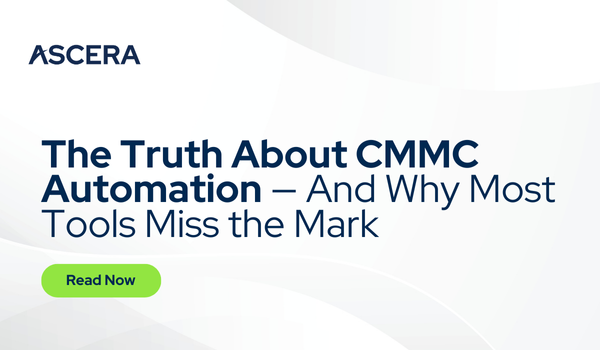“Automation” has become a buzzword in the cyber-compliance world. Every platform claims to offer it, but when you dig deeper, many so-called “automated” solutions still rely heavily on human input, manual evidence gathering, and endless spreadsheets disguised behind user-friendly dashboards. For organizations dealing with complex frameworks like CMMC, this kind of surface-level automation just isn’t enough.
If you’re like most organizations in the Defense Industrial Base (DIB), you don’t have time or resources to waste on software that promises automation but delivers digital paperwork. What you need is true automation — something that replaces manual effort, not just organizes it.
The Illusion of CMMC Automation
Let’s talk about what many CMMC platforms mean when they say “automated.” Often, it’s just a digitized version of the same manual process you’ve always used. You’re still expected to gather evidence, respond to controls line by line, and piece together compliance documentation yourself. These platforms might streamline how you input data, but they don’t reduce the amount of labor required to maintain compliance.
A few red flags that indicate faux-automation:
- TurboTax-style forms that require you to manually answer control questions with no built-in intelligence
- Static document templates that don’t evolve as your environment changes
- Compliance status that updates only when you log in and make manual changes
- Evidence tracking that’s entirely dependent on uploads and tags
These tools might make the process feel more organized, but they aren’t truly doing the work for you.
What Real CMMC Automation Looks Like
Real CMMC automation removes friction. Instead of relying on users to manually input, upload, tag, and track everything, true automation handles the heavy lifting in the background.
Here’s what that actually looks like in practice:
- No manual data entry. Your automation tool should continuously pull data from your environment to update compliance status without requiring human input every step of the way.
- Intelligent control mapping. When a file is uploaded or a question is answered, the tool should automatically map that data across all relevant controls and frameworks, eliminating redundant work.
- Live document generation. System Security Plans (SSPs), POA&Ms, and other artifacts should be generated automatically from current data, keeping documentation in sync with reality.
- Built-in remediation guidance. Instead of just surfacing problems, automated tools should suggest specific next steps based on the control requirements and evidence gaps without the need to consult a third party.
- A continuously evolving compliance view. Rather than static reports, a real automation platform gives you a living picture of your compliance posture that reflects real-time changes.
In short, real automation means less manual effort, fewer mistakes, and a compliance process that adapts with you — not one you have to babysit.
Final Thoughts
If a CMMC automation platform still expects you to drive every step of the process manually, it’s not truly automated. Tools like ASCERA are different. With ASCERA, you can cut the time spent collecting, managing, and updating evidence in half.
